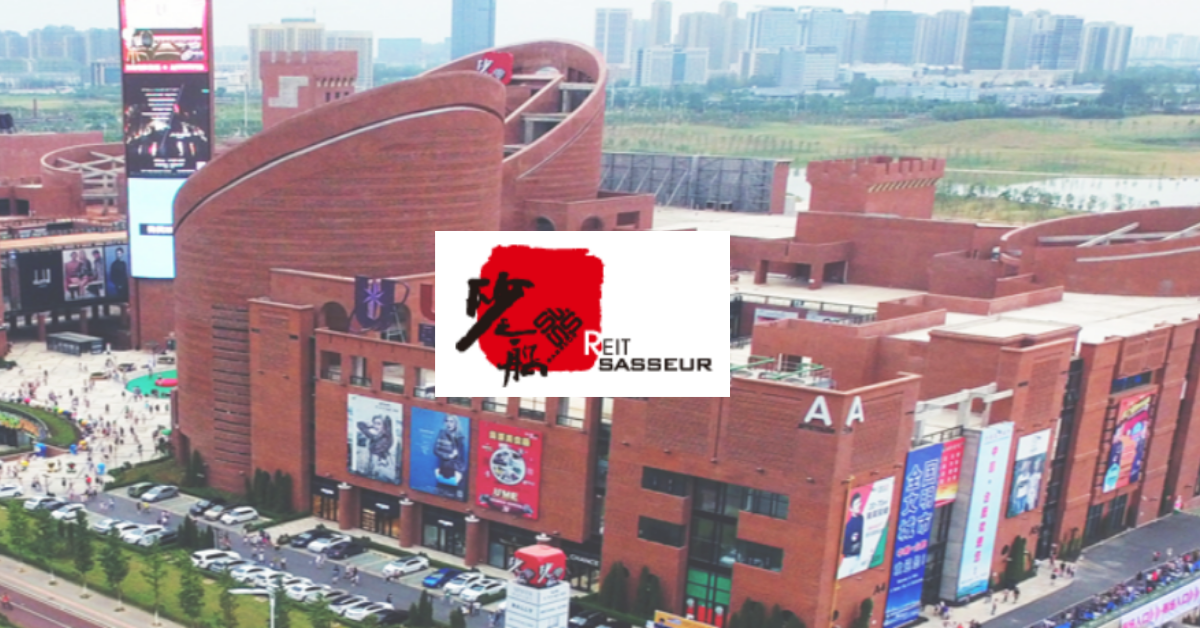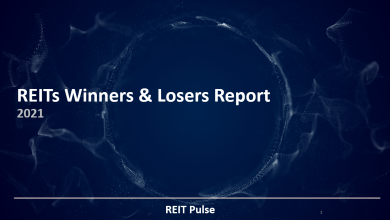
Mapletree North Asia Commercial Trust or better known as MNACT (SGX: RWOU) is a REIT which was listed in the Singapore Stock Exchange in March 2013. As the name pointed out, MNACT invests in assets across the North Asia region primarily in China, Hong Kong SAR and Japan. As at 31 March 2020, their total investment properties are valued at SGD 8.3 billion.
They are one of the few REITs which are sponsored by Mapletree Investment Pte Ltd (MIPL) which happen to be a leading real estate development and property management company headquartered in Singapore. MIPL has an asset under management of SGD 60.5 billion as at 31 March 2020 comprising of various asset type across 13 markets globally. Hence, there is no doubt that MNACT has rather strong backing.
Throughout the year making up FY20, there have been many events which have taken place. Some positive and some negative. In this post today, we will look into the few key things you need to know of MNACT FY20 performance.
1. Festival Walk Protest
One of the prominent ones which have affected MNACT is the incident at Festival Walk. The protest which started out as a peaceful protest has turned violent when a few groups of protestors smashed the glass panels at the property and begun vandalising the properties.
As a result of this incident, it has resulted in closure in Festival Walk from 13 November 2019 to 15 January 2020 in which no rental is collected during this period. Secondly, the extensive damage caused by the protest will definitely be detrimental to the REIT itself.
However, it is worth noting that the loss in income and damage to the properties are insured by their insurance policy. As at to date, they have received an interim payment but will continue to pursue its claims for both property damage as well as revenue loss from the interruption to business operations during the mall’s temporary closure.
2. Festival Walk makes up c.60% of the total portfolio

Though MNACT owns a total of 11 properties, Festival Walk mall which is located in Hong Kong make up the biggest proportion of the entire portfolio. The asset itself accounts for 61% of the entire portfolio. Echoing the previous point, the closure of festival walk has definitely affected MNACT financial performance adversely.
This is a good example of why a huge concentration on a single portfolio can be a risk to the REIT.
3. Acquisition of 2 Japan Assets
On 28 February 2020, MNACT has completed its acquisition of two Japan properties in Chiba and Tokyo. Omori Prime Building which is located in Tokyo has an occupancy rate of 100% whereas Mbay Point located in Chiba has an occupancy rate of 86.6%.
In our opinion, these two properties addition is a plus to MNACT in reducing the reliant on Festival Walk.
4. Overall Decline in Occupancy Rate
| FY19 | FY20 | |
| Gateway Plaza | 100% | 92% |
| Sandhill Plaza | 99% | 98% |
| Festival Walk | 99% | 100% |
| Japan Properties | 100% | 95% |
In term of the occupancy rate of MNACT, there has been a mixture of operational performance throughout the last 2 years. At a high-level glance, there has been an overall drop in the occupancy rate across all the assets in MNACT.
Going forward, we expect the occupancy rate of MNACT to remain weak given the uncertainty in the Covid-19 pandemic and the political unrest in Hong Kong.
5. Positive financial performance from FY17 to FY19 with a decline in FY20
| SGD in mil | FY17 | FY18 | FY19 | FY20 |
| Revenue | 350.6 | 355.0 | 408.7 | 354.5 |
| Net Property Income | 285.6 | 287.2 | 329.0 | 277.5 |
| Distributable Income | 204.6 | 201.9 | 240.7 | 227.9 |
The financial performance of MNACT has been growing on an increasing trend from FY17 to FY19 mainly contributed by Festival Walk which is deemed as their crown jewel. The REIT manager active acquisition approach has also been a contributing factor to the growth of MNACT. The growth of net property income from SGD 285.6 mil in FY17 to SGD 329 mil in FY19 is mainly fueled by the acquisition of the Japan properties.
The decline in FY20 on the other hand is mainly contributed by the Festival Walk incident whereby MNACT has suffered a loss in income for a period of time. As shared earlier, this is a good example of the adverse effect of having a huge reliance on an asset.
While the net property income has hugely declined as a result of the festival walk incident, the quantum drop of distributable income is lower. This is mainly due to the inclusion of top-ups of SGD 32.9 mil to compensate for the loss of income as a result of the mall closure which may be recovered through insurance claims.
6. Distribution Per Unit (DPU)
| Cents | FY17 | FY18 | FY19 | FY20 |
| Distribution Per Unit | 7.3 | 7.5 | 7.7 | 7.1 |
The next aspect investor would be keen to look into is the distribution per unit. Looking at the historical trend, the DPU has been on an increasing trend from 7.3 cents in FY17 to 7.7 cents in FY19. The dropped in FY20 is in line with the explanation in the previous point.
With the two newly added properties in Japan and the resume activities in Festival Walk, we would expect the DPU to slightly improve. However, that would be subject to the ability of the REIT manager to fare through the COVID-19 pandemic.
7. Debt Composition
| 31 March 2019 | 31 March 2020 | |
| Gross Debt | 2,878.0 | 3,383.0 |
| Leverage Ratio | 37% | 39% |
| ICR | 4.2 | 3.5 |
The overall debt of MNACT has increased to partially finance the acquisitions of MBP and Omori. Despite the increased in borrowing, the leverage ratio still remain fairly healthy below the permissible limit.
The interest coverage ratio, on the other hand, declined from 4.2 in FY19 to 3.5 in FY20. This is mainly due to the drop in the overall financial performance mainly from the incident at Festival Walk.
8. COVID-19 Impact and Market Outlook in Q1 2020
The next key area we will be looking at is the COVID-19 impact on the properties. While the 1H20 results are not available as at the date of this writing, we will review briefly based on readily available information.
COVID-19 pandemic has definitely taken a toll on businesses globally. The REIT sector itself is affected. MNACT’s properties are located primarily in Hong Kong SAR, China and Japan. Not all market are equal. Based on the Q1 business update released on 27 July 2020:
Hong Kong SAR Market: The retail sales in Hong Kong SAR dropped both in April and May 2020 amid the evolving COVID-19 situation, weak labour market conditions and the ongoing travel restrictions. While the occupancy rate remained stable, the average rental reversion has dropped by 10%
Beijing Market: Many companies shift their focus on cost-cutting measure amid the sluggish economic conditions. Similarly, the occupancy rate for the Beijing market has remained stable with a dropped in average rental reversion by 5%.
Shanghai Market: The property in Shanghai remains rather resilient with a strong average rental reversion of 7%. However, the occupancy rate has declined slightly.
Overall Japan Market: The properties in Japan remain amid the volatility in the market. They have achieved an overall higher occupancy level and positive average rental reversion in Q1 2020. This is mainly contributed by the two newly acquired properties.
9. Proposed Acquisition of Properties in Seoul
In a press release dated 25 September 2020, MNACT has announced its proposed acquisition of a Freehold Office building in Seoul valued at SGD 528 mil. The acquisition will be a joint acquisition of MIPL (“the sponsor”) and MNACT in which they will hold 50% of the interest.
This acquisition when completed will allow MNACT to penetrate into the Korea market. The proposed property has an occupancy rate of 89.6% as at 31 July 2020 and an approximately 97% of the leases have a fixed annual rental escalation of approximately 2% to 3%.
Summary
From our overall analysis, MNACT has been a REIT which has been growing positively historically (with the exception of FY20). The financial performance and the DPU has been on a stable trend mainly contributed by Festival Walk performance. The incident at Festival Walk late 2019 is a good example of why a heavy proportion of asset can be adverse to the REIT which can be seen from its overall dropped in financial performance in FY20.
But nevertheless, the REIT manager active acquisition since 2018 has been a plus to investors in diversifying its overall portfolio.
What are your thoughts on MNACT? If you are just getting started, feel free to read more of our REIT Guide and REIT Analysis. You can also read more about what REITs are if you are new to REITs.
Do join our community over at Facebook and Instagram.





